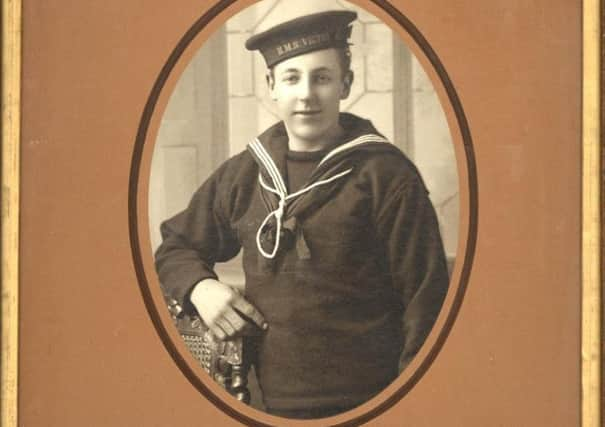Family find link to sailor a century after one of Scotland's worst wartime tragedies


Now, a century after the loss of nearly 200 men who served on HMS Opal and HMS Narborough, a remarkable discovery will help ensure their sacrifice will never be forgotten.
The relatives of one young sailor who was among the dead have tracked down a brass plaque he made and used on the Opal before it was sunk off the coast of South Ronaldsay.
Advertisement
Hide AdIt comes as the people of Orkney prepare to honour the memory of the 189 crew members who lost their lives as the ships were en route to Scapa Flow during a snowstorm on 12 January, 1918.
Among those killed was Fred Rotchell, 19, a cabinet maker who had only recently joined the Opal. The young sailor was the great-uncle of Jane Brady, from Frodsham, near Chester, whose husband, Kieran, has looked into Fred’s story.
During his research, Mr Brady was put in touch with Willie Budge, from South Ronaldsay, who has documented the wartime history of Orkney.
As the two men conversed, Mr Budge said he was only aware of two names relating to the disaster. The first was William Sissons, the sole survivor. Much to Mr Brady’s surprise, the second name was one F Rotchell.
It transpired that an Orkney man, John George Halcro, had been climbing the cliffs near where the Opal went down and came across a cormorant’s nest. Inside, he found shards of metal the bird had scavenged from the wreck.
In among the detritus he found a brass name plate from a ship’s “ditty box” – used by sailors to store their personal possessions. The name on it was that of Ordinary Seaman Rotchell.
Advertisement
Hide AdThe discovery, Mr Brady said, meant a great deal to his family. “Fred was the older brother of my wife’s grandfather Charles,” he said. “They were very close and Charles suffered more than anyone after Fred was lost.
“There’s a poignant message on the rear of a portrait of Fred in his uniform which states: ‘To Charlie from Mum and Dad. In Memory of Dear Brother Fred’.”
Advertisement
Hide AdNext Friday, on the centenary of the tragedy, a wreath will be laid at the Opal and Narborough memorial at Windwick Bay in South Ronaldsay.
The main commemorative event will take place at the Cromarty Hall, St Margaret’s Hope, where there will be a community lunch.
A small information display and a short presentation by local historian Brian Budge will tell the story of the ships and their crews.
Such events, Mr Brady said, were important to those who had lost loved ones.
He added: “Like most of the men, [the body of] Fred was never recovered and like many of them, he was very young when he died.
“It is so important that they are not forgotten – I am very pleased that they will be remembered at the events taking place in Orkney to mark the centenary.”
Advertisement
Hide AdThe name plate and photographs of Fred can be seen on a website Mr Brady has created in memory of his wife’s great-uncle and all the other sailors lost in the tragedy. It can be found at www.kbrady.com/opal.html